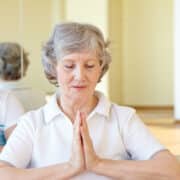Beat the Heat: Summer Safety Tips for Seniors
Summer is a time for enjoying the sunshine and warmer weather, but it also brings higher temperatures that can pose health risks, especially for seniors. Staying cool and hydrated is crucial to prevent heat-related illnesses. In this blog post, we will share practical advice on staying safe during the hot summer months, discuss the signs of heat exhaustion, and provide tips to prevent it.
Staying Cool and Hydrated:
1. Drink Plenty of Fluids:
- Hydration is key in the summer. Seniors should drink plenty of water throughout the day, even if they don’t feel thirsty. Aim for at least 8 glasses of water daily. Avoid caffeinated and alcoholic beverages, as they can lead to dehydration.
2. Wear Light Clothing:
- Choose lightweight, loose-fitting, and light-colored clothing. Natural fabrics like cotton and linen are excellent choices as they allow the skin to breathe and help keep the body cool.
3. Stay Indoors During Peak Hours:
- The sun is at its strongest between 10 a.m. and 4 p.m. Seniors should try to stay indoors during these hours. If they need to go outside, they should seek shade and wear a wide-brimmed hat and sunglasses.
4. Use Fans and Air Conditioning:
- Ensure living spaces are well-ventilated. Use fans to circulate air and air conditioning to maintain a comfortable indoor temperature. If air conditioning is not available, visit public places like shopping malls, libraries, or community centers that are air-conditioned.
5. Take Cool Showers or Baths:
- A cool shower or bath can help lower body temperature. Seniors can also use damp washcloths on the wrists, neck, and forehead to cool down.
6. Eat Light Meals:
- Heavy meals can add to the body’s heat. Opt for light, refreshing meals that are easy to digest, such as salads, fruits, and vegetables.
Signs of Heat Exhaustion:
It’s important to recognize the signs of heat exhaustion, which can escalate into heat stroke if not addressed promptly. Symptoms of heat exhaustion include:
- Heavy sweating
- Weakness or fatigue
- Dizziness or lightheadedness
- Nausea or vomiting
- Muscle cramps
- Headache
- Rapid heartbeat
- Pale, cool, and clammy skin
If any of these symptoms are present, it’s essential to take action immediately.
Tips for Preventing Heat Exhaustion:
1. Stay Informed:
- Keep an eye on the weather forecast. On particularly hot days, take extra precautions to stay cool and hydrated.
2. Monitor Health:
- Check in on elderly loved ones regularly, especially those with chronic conditions or those taking medications that might affect their ability to regulate body temperature.
3. Rest Frequently:
- If engaging in outdoor activities, take frequent breaks in a cool, shaded area to prevent overheating.
4. Hydration Reminders:
- Set reminders to drink water throughout the day. Consider using a water bottle with time markers to encourage consistent hydration.
5. Seek Medical Attention:
- If symptoms of heat exhaustion persist or worsen, seek medical attention immediately. Heat exhaustion can escalate quickly, so it’s important not to ignore the signs.
By taking proactive steps to stay cool and hydrated, seniors can safely enjoy the summer months. Remember to recognize the signs of heat exhaustion and take preventative measures to protect your health. With these tips, you can beat the heat and make the most of the sunny season. Stay cool, stay safe, and enjoy your summer!
















You must be logged in to post a comment.